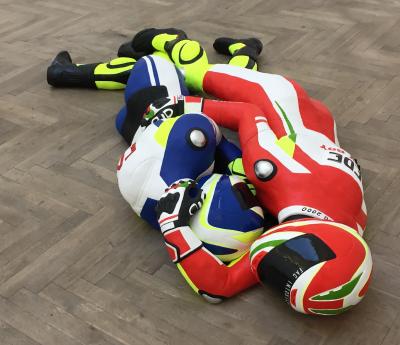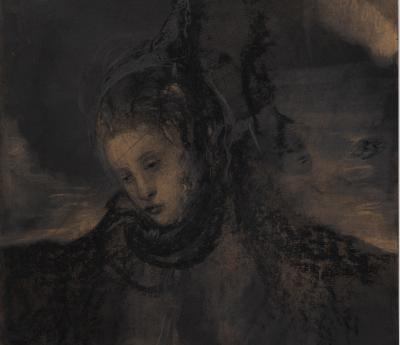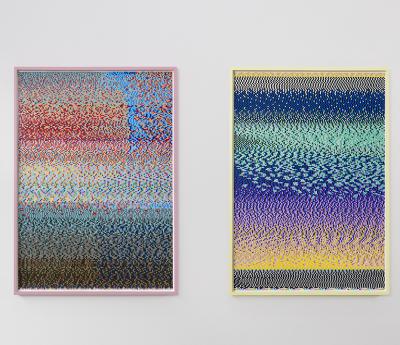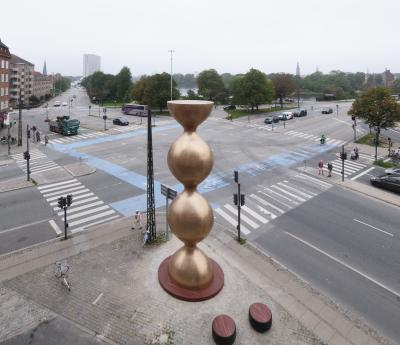Despite his early death, Thomas Arge (1942–1978) is remembered for a unique oeuvre that has positioned him as one of the most important Faroese artists two generations after the ground-breaking painters S. J. Mikines, Ruth Smith and Ingálvur av Reyni.
Arge attended the Royal Danish Academy of Fine Arts in 1964–1970, where the abstract artist Richard Mortensen was his teacher. Arge did not share his professor’s interest in the formalist and geometric idiom of high modernism but instead pursued natural expressionism with deep roots in the dramatic landscapes of his native soil.
Rocks, sky, alcohol
According to the director of the National Galley of the Faroe Islands, Nils Ohrt, Arge experimented with action painting, a style pioneered by Jackson Pollock. Í Reyninum / I Stenørkenen owes its characteristic composition to this technique. The painting is dominated by a foreground composed of scattered paint dots kept in a cool, grey scale complemented by yellow, green and brownish nuances, while the background shows steep rocks against an overcast sky.
‘The motif draws on inspiration from the rocky plateau Kirkjubøreyn south-west of Tórshavn. Here, the movements of the ice during the latest ice age transformed the plateau into a stony desert,’ Nils Ohrt explains. He also highlights Arge’s interpretive treatment of the landscape, however, a treatment that means that the painting is far removed from a naturalist portrayal and instead reflects the artist’s inner gaze.
‘Thomas Arge is the first artist to make the unspoilt world of the mountains a leitmotif in Faroese landscape painting, which until then had been dominated by village scenes. Instead of idyllic images, his work depicts a desolate and barren world of stone, thus taking on the character of a soul painting.’
Arge had an intensely prolific period as an artist during the 1970s, but his increasing alcohol abuse contributed to his untimely death, not quite 36 years old. The painting Í Reyninum / I Stenørkenen has been on loan to the National Gallery of the Faroese Islands for many years while in private ownership, and funds from the New Carlsberg Foundation have now made it possible for the gallery to buy the piece and include it in the permanent collection.
![Thomas Arge: Í Reyninum [In the Stone Desert]. 1974](/sites/default/files/styles/slider_full/public/2018-05/Thomas%20Arge%2C%20I%20sten%C3%B8rkenen.%201974_0.jpg?itok=Y5U1U0dg)



